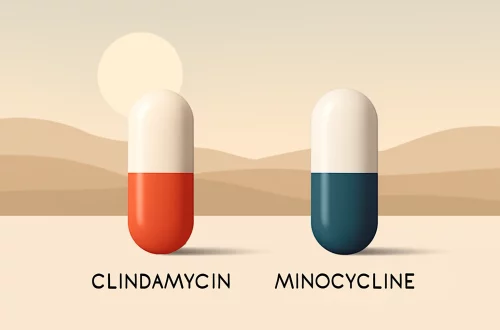
The Rise of Gluten-Free Cereals: Delicious Options for Everyone
The popularity of gluten-free diets has surged in recent years, driven by a growing awareness of gluten intolerance, celiac disease, and the desire for healthier eating habits. As a result, consumers are increasingly seeking out gluten-free alternatives to traditional foods, including cereals. Once considered a niche market, gluten-free cereals have transformed into a diverse and delicious segment, catering not just to those with dietary restrictions but also to health-conscious individuals and families.
The rise of gluten-free cereals is not just about eliminating gluten; it’s about providing tasty, wholesome options that everyone can enjoy. With a variety of grains, seeds, and natural ingredients, manufacturers have crafted cereals that are not only safe for those avoiding gluten but also appealing to a broader audience. This shift has opened up exciting possibilities for breakfast and snacking, allowing individuals to explore new flavors and textures without sacrificing taste. As consumers become more educated about their dietary choices, the demand for gluten-free cereals continues to rise, pushing brands to innovate and improve their offerings.
In this context, gluten-free cereals are more than just a trend; they represent a significant change in how we think about breakfast and nutrition. With an array of delicious options available, it’s clear that gluten-free cereals are here to stay, making mornings brighter for everyone.
The Evolution of Gluten-Free Cereals
The evolution of gluten-free cereals can be traced back to the increasing recognition of gluten-related disorders and the need for suitable dietary alternatives. Historically, individuals with celiac disease had limited options when it came to breakfast cereals, often resorting to bland rice-based products or homemade alternatives. However, as awareness grew and more people began to explore gluten-free diets for various health reasons, the market responded with an influx of innovative products.
Manufacturers started experimenting with a variety of gluten-free grains such as quinoa, buckwheat, and millet, which offered not only gluten-free status but also unique flavors and nutritional benefits. Quinoa, for instance, is high in protein and fiber, making it an excellent choice for those looking to enhance their diet. Similarly, buckwheat is rich in antioxidants and has a nutty taste that can elevate the breakfast experience.
As these grains gained popularity, companies began to create blends that combined multiple gluten-free ingredients, resulting in cereals that are both nutritious and delicious. The introduction of new processing techniques further improved the texture and taste of these cereals, making them more appealing to the average consumer.
Furthermore, the rise of health-conscious eating habits has pushed many brands to focus on organic and non-GMO ingredients, catering to a demographic that values transparency and quality in their food choices. This trend is reflected in the packaging of gluten-free cereals, which now often highlights the absence of artificial additives and the presence of wholesome ingredients.
Today, gluten-free cereals are not just an option for those with dietary restrictions; they have become a staple in many households, with a growing variety of flavors and textures that appeal to everyone from children to adults.
Delicious Flavors and Varieties
One of the most exciting aspects of the gluten-free cereal market is the incredible variety of flavors and options available. Unlike the limited choices of the past, consumers can now find gluten-free cereals that cater to a wide range of taste preferences.
From fruity to nutty, savory to sweet, the flavor profiles of gluten-free cereals are as diverse as the grains used to create them. For instance, many brands have embraced the natural sweetness of ingredients like honey, maple syrup, and agave nectar, resulting in cereals that are both flavorful and healthier alternatives to traditional sugary cereals.
Chocolate-flavored gluten-free cereals have also gained popularity, appealing to those who enjoy a decadent breakfast experience. Whether made with cocoa or chocolate chips, these cereals offer a delightful treat without the gluten.
In addition to sweet flavors, savory options are emerging in the gluten-free cereal market. Some brands have introduced cereals that include spices, seeds, and even vegetables, creating a unique breakfast option that deviates from traditional sweet cereals. These savory blends can be enjoyed with milk or yogurt, or even as a topping for salads, providing versatility in how they can be consumed.
The market also caters to specific dietary needs and preferences, such as high-protein or high-fiber cereals. Many gluten-free cereals now boast added nutrients, making them an attractive choice for anyone looking to enhance their breakfast with additional health benefits.
With such a vast array of flavors and varieties available, it’s easier than ever for consumers to find gluten-free cereals that not only meet their dietary needs but also satisfy their taste buds.
Health Benefits of Gluten-Free Cereals
While gluten-free cereals are primarily marketed toward those with gluten intolerance, they also offer numerous health benefits that can appeal to a broader audience. Many gluten-free cereals are made from whole grains, seeds, and legumes, which provide essential nutrients and contribute to overall health.
One of the most significant benefits of gluten-free cereals is their potential for higher fiber content. Ingredients such as oats, chia seeds, and flaxseeds are often included in gluten-free cereal blends, which can aid in digestion and promote a healthy gut. A diet high in fiber is linked to reduced risks of heart disease, obesity, and diabetes, making it crucial for maintaining overall health.
Additionally, many gluten-free cereals are fortified with vitamins and minerals, providing an extra boost of nutrition. For example, some cereals are enriched with iron, B vitamins, and vitamin D, which can help to fill dietary gaps, especially for individuals who may have restrictions in their diet.
Moreover, gluten-free cereals tend to be lower in processed sugars compared to traditional cereals, making them a healthier breakfast option. This reduction in sugar content can help in managing weight and reducing the risk of developing chronic diseases.
It is essential to note that while gluten-free cereals can offer various health benefits, they are not a one-size-fits-all solution. Individuals with specific health concerns or dietary needs should consult with a healthcare professional before making significant changes to their diet.
**Disclaimer: This article is for informational purposes only and should not be considered medical advice. For any health-related issues, please consult a healthcare professional.**
The Future of Gluten-Free Cereals
As the demand for gluten-free options continues to grow, the future of gluten-free cereals looks promising. The market is expected to expand further, driven by consumer preferences for healthier, more varied food options.
Innovation will play a crucial role in shaping the future of gluten-free cereals. Manufacturers are likely to explore new grains and ingredients that can enhance the nutritional profile of their products while also appealing to taste. Trends such as ancient grains, plant-based proteins, and superfoods are likely to gain traction in the gluten-free cereal segment.
Sustainability will also become an increasingly important factor in the production of gluten-free cereals. As consumers become more environmentally conscious, brands may focus on sourcing ingredients responsibly and reducing their carbon footprint in the manufacturing process. This shift could lead to a new wave of gluten-free cereals that are not only beneficial for health but also for the planet.
Moreover, with the rise of online shopping and subscription services, consumers will have easier access to a broader range of gluten-free cereal options. This convenience will allow individuals to try new products and find their favorites without being limited by local store availability.
In conclusion, the rise of gluten-free cereals has transformed breakfast for many, offering delicious and nutritious options that cater to a wide audience. As innovations continue to emerge, the future of gluten-free cereals promises to be as exciting and varied as the grains they are made from.




